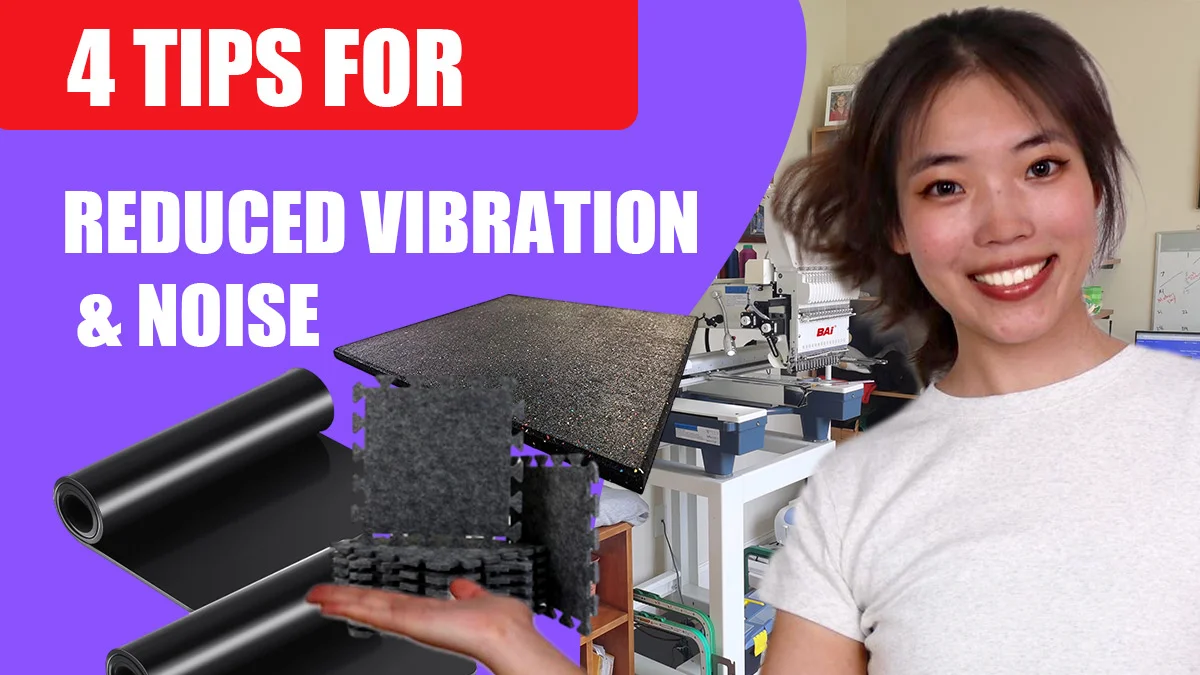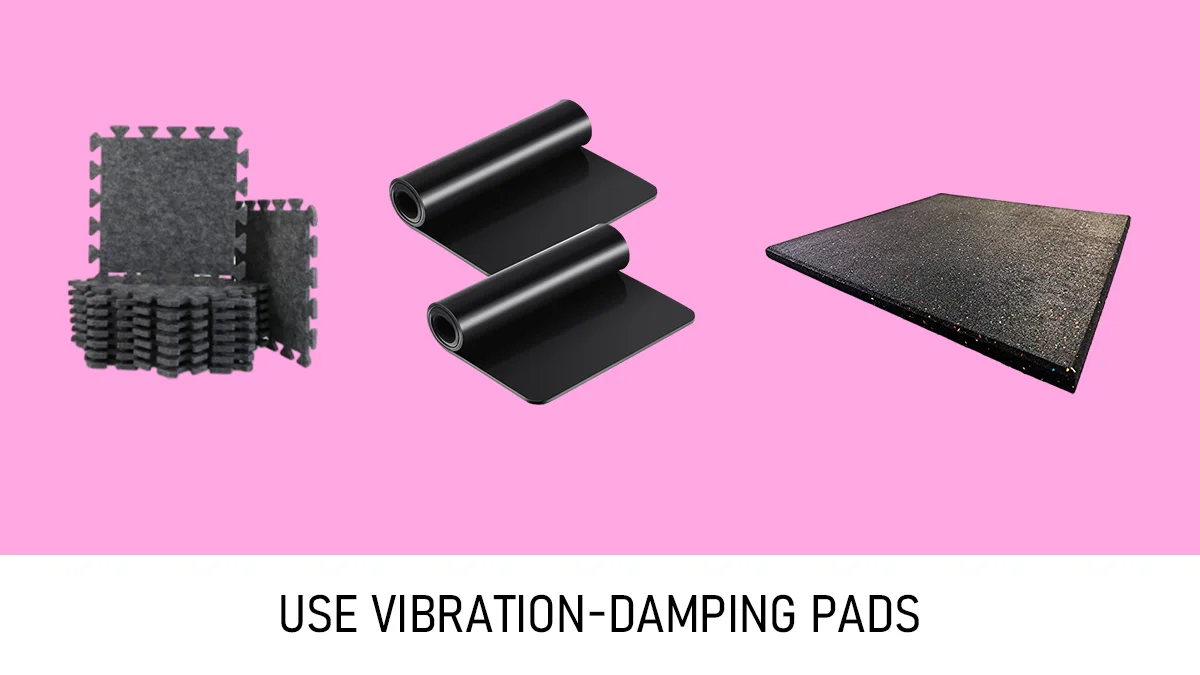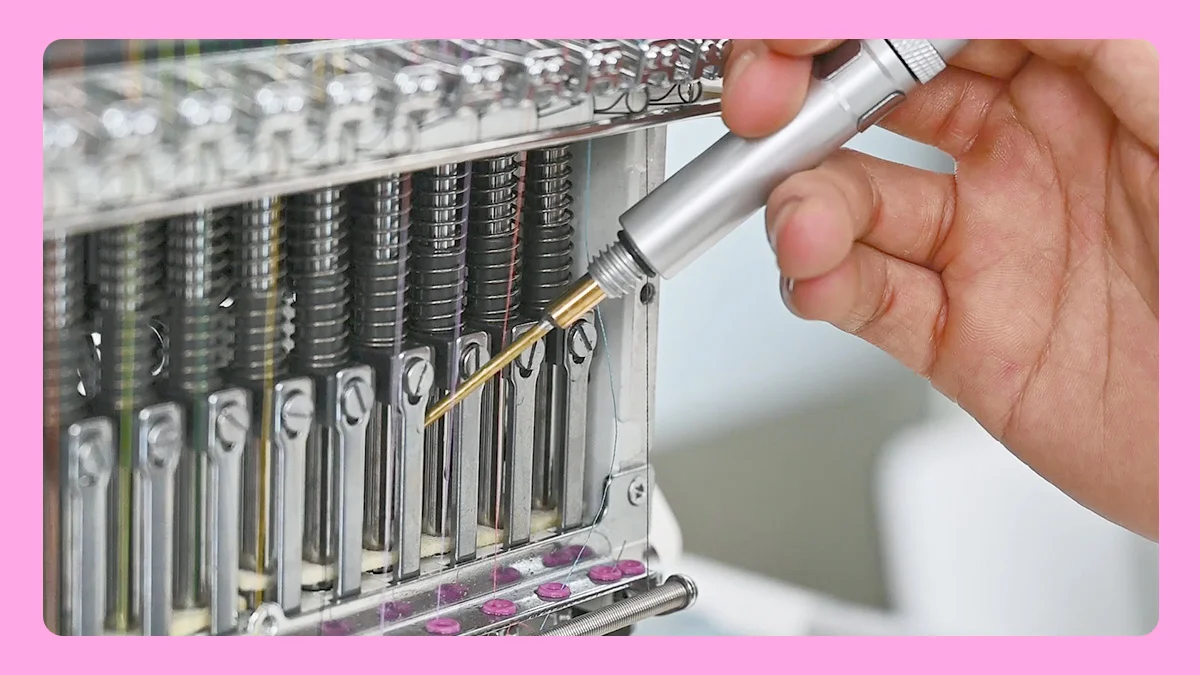
Where to buy machine embroidery supplies?
2024-04-17
How to choose blank patches?
2024-04-27BUSINESS TIPS
How to effectively reduce vibration and noise during embroidery?
POSTED ON APRIL 24th,2024 BY BAi

Do you often encounter issues of vibration and noise during machine embroidery that can be frustrating and negatively impact your comfort and efficiency? This article will share some effective tips to help you reduce vibration and noise during the machine embroidery process, improving your working experience and results. Let's get started!
#1 Adjusting the balance of the embroidery machine
The balance issue of the embroidery machine is one of the main causes of vibration and noise, and making balance adjustments can often have a significant effect in reducing vibration.
Firstly, balance adjustments can eliminate uneven weight distribution. Different components of the embroidery machine, such as the motor, transmission system, and the machine head, have their own weights. If the weight distribution of these components is uneven, it can cause the machine to generate unbalanced forces during operation, leading to vibration and noise.
Secondly, balance adjustments can reduce friction and vibration of the machine. When the components of the embroidery machine are imbalanced, it can increase the friction between the parts, resulting in more vibration and noise. By adjusting the balance of the embroidery machine, smoother contact between the components can be achieved, reducing the degree of friction and thus lowering vibration and noise.
Additionally, balance adjustments can enhance the stability of the embroidery machine. When the embroidery machine is in a balanced state, it can better resist external interferences and impacts, maintaining stable operation.
Here are some tips for adjusting the balance of the embroidery machine:
- Check screws and nuts: Various components of the embroidery machine are typically connected by screws. Ensure that all screws and nuts on the embroidery machine are properly installed and tightened.
- Adjust tension: Adjust the tension appropriately according to the instruction manual of the embroidery machine to ensure even thread tension.
#2 Use vibration-damping pads
Vibration-damping pads are typically made of soft materials such as rubber or foam. These materials have excellent shock-absorbing properties and can absorb the vibrations generated by the embroidery machine. Therefore, vibration-damping pads are effective tools for reducing vibration and noise during machine embroidery. By using vibration-damping pads, the direct contact between the machine and the floor or other surfaces is reduced, thereby minimizing friction and impact between the machine and the surface.

Here are some tips for using vibration-damping pads:
- Choose the appropriate vibration-damping pad: Select a suitable vibration-damping pad based on the weight and size of the embroidery machine. Ensure that the pad provides sufficient support and vibration-damping effect.
- Properly install the vibration-damping pad: Place the vibration-damping pad correctly between the embroidery machine and the stand, ensuring it is in a stable and secure position.
- Ensure smooth placement: Position the embroidery machine on the vibration-damping pad, ensuring that the machine is placed smoothly without any tilting or instability.
- Regularly inspect the vibration-damping pad: Periodically check the condition of the vibration-damping pad to ensure that it is not worn out or damaged. Replace the pad promptly if necessary.
#3 Reduce embroidery speed
The embroidery needle generates vibrations during the embroidery process, and these vibrations are transmitted to the base of the embroidery machine and the surrounding surfaces, resulting in noise. Therefore, reducing the embroidery speed is also one of the tips for reducing vibration and noise.
Here are some tips for reducing embroidery speed:
- Adjust machine settings: Embroidery machines usually have speed adjustment functions, allowing you to lower the embroidery speed by adjusting the machine's settings.
- Use appropriate embroidery needles: The type and size of the embroidery needle can affect the embroidery speed.
- Adjust tension: Properly adjust the tension of the embroidery thread to ensure thread running smoothly.
#4 Regular care and maintenance of the embroidery machine
During the operation of the embroidery machine, friction occurs between the moving parts. The parts will be damaged after prolonged friction. Regular care and maintenance of your embroidery machine can reduce friction between parts.

Here are some tips for regular care and maintenance of your embroidery machine:
- Gently clean the outside surfaces of the machine with a soft cloth or brush to remove dust and debris.
- Regular oil or lubricant embroidery machine parts.
- Inspect embroidery machine parts regularly and replace worn or damaged parts promptly.
As you have just read, there are many tips available to eliminate the noise produced by the embroidery machine. By implementing these tips, you can effectively reduce vibration and noise during the embroidery process, providing a quieter and more comfortable working environment. This not only improves your embroidery experience but also minimizes disturbances to the surrounding environment.
-1.png)
